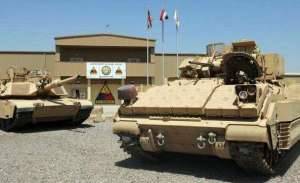
When a military contractor approached the Army with a proposal for significant savings on armor tiles for the Bradley Fighting Vehicle, the impulse to quickly go for the savings had to be postponed: The Bradley played such an important role in saving lives that keeping a steady flow of contracts was paramount.
Ultimately, however, the Army and the contractor split a savings of $38 million as a result of using a different material to produce the critical armor tiles.
The $19 million of savings by the Army is the largest achieved thus far by the Army Contracting Command-New Jersey, under a program called a Value Engineering Change Proposal, or VECP.
Under the program, a contractor can submit a proposal that, through a change in the contract, would lower the project's life-cycle cost.
The value engineering program is intended to reduce costs, increase quality, and improve mission capabilities across the entire spectrum of Department of Defense systems, processes, and organizations.
Although pursuing savings is important, the Army's critical equipment needs on the battlefield are also a critical part of the equation.
The Bradley, which entered Army service in 1981, is used by brigade combat team as an infantry fighting vehicle, cavalry fighting vehicle, fire support vehicle, command vehicle and engineer squad vehicle.
In 1995, General Dynamics Armament and Technical Products was awarded a contract to produce Bradley armor tiles for the Department of Defense, with the first contract for more than 2,000 reactive armor tile sets.
This system is made of 96 tiles which are mounted on the exterior of the Bradley, which is named after Gen. Omar Bradley, a senior Army commander during World War II.
Reactive armor tiles on the vehicle use small explosives that detonate when hit by incoming fire.
The detonations reduce damage to the vehicle and the effectiveness of incoming fire.
"When equipped with the reactive armor tiles, the combat vehicles are better able to withstand direct hits from a variety of anti-armor munitions, including shoulder-fired rocket propelled grenades that are prevalent in today's combat zone," said Mariah Hazlett, a contract specialist with ACC-New Jersey, which has its headquarters at Picatinny Arsenal.
In its engineering proposal, General Dynamics asked to change the armor tile box material from titanium to aluminum for more than 800 reactive armor tile sets.
"They wanted to change the material for several reasons," said Peter Snedeker, a contracting officer with ACC-New Jersey. "It was easier to manufacture with aluminum rather than titanium, so there would be shorter lead times. Aluminum was also more readily available and cheaper."
However, changing a contract isn't a simple matter. The change can't have a material effect on the design, nor can performance be less than what the contract requires.
The aluminum must perform just as well or better than titanium to support the demands of the Soldier.
ACC-New Jersey's technical team performed an extensive analysis of the change proposal and continued to work with General Dynamics to determine if the material switch served the form, fit and function specified in the technical data package. Prototypes were developed, samples were provided to ACC for analysis, and testing began to determine if the initiative was worth pursuing.
Even with the time-consuming analysis and audits involved in evaluating the proposal, an important factor affected the time frame for any new contract.
"Because of some needs in the field, it was determined that we would put the negotiations aside and keep fielding as much as possible because it was saving significant lives so we had the priority of keeping the contracts flowing," Snedeker said.
"All of the testing was done up front and the negotiations happened on the back end," added Hazlett.
From start to finish, the change in contracts for the Bradley armor tiles stretched out for several years, a period that was longer than usual owing to the complexity and nature of the product, the need for analysis and audits, along with the fact that providing a continuous flow of armor tiles was critical for Soldiers in the field.
In addition to Snedeker and Hazlett, other persons who helped move the engineering proposal forward include contract specialist Stephen Ernyey, lead engineer Stephen Chico, quality engineer Matthew Molnar and pricing specialist Denise DiMatteo.
Although the entire process was long and involved coordination by many people, Hazlett said the outcome was very rewarding.
"With budgets being reduced there has been a push to save money and pursue more competitive actions," Hazlett said. "VECP gives us another tool to reduce costs for the government and taxpayers."
Editor's note: Ann Jensis-Dale is a public affairs specialist with the Army Contracting Command. Ed Lopez is editor of The Picatinny Voice.
US Army
02.03.2013